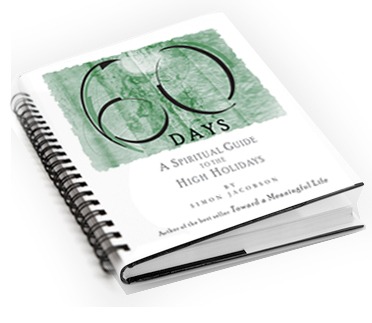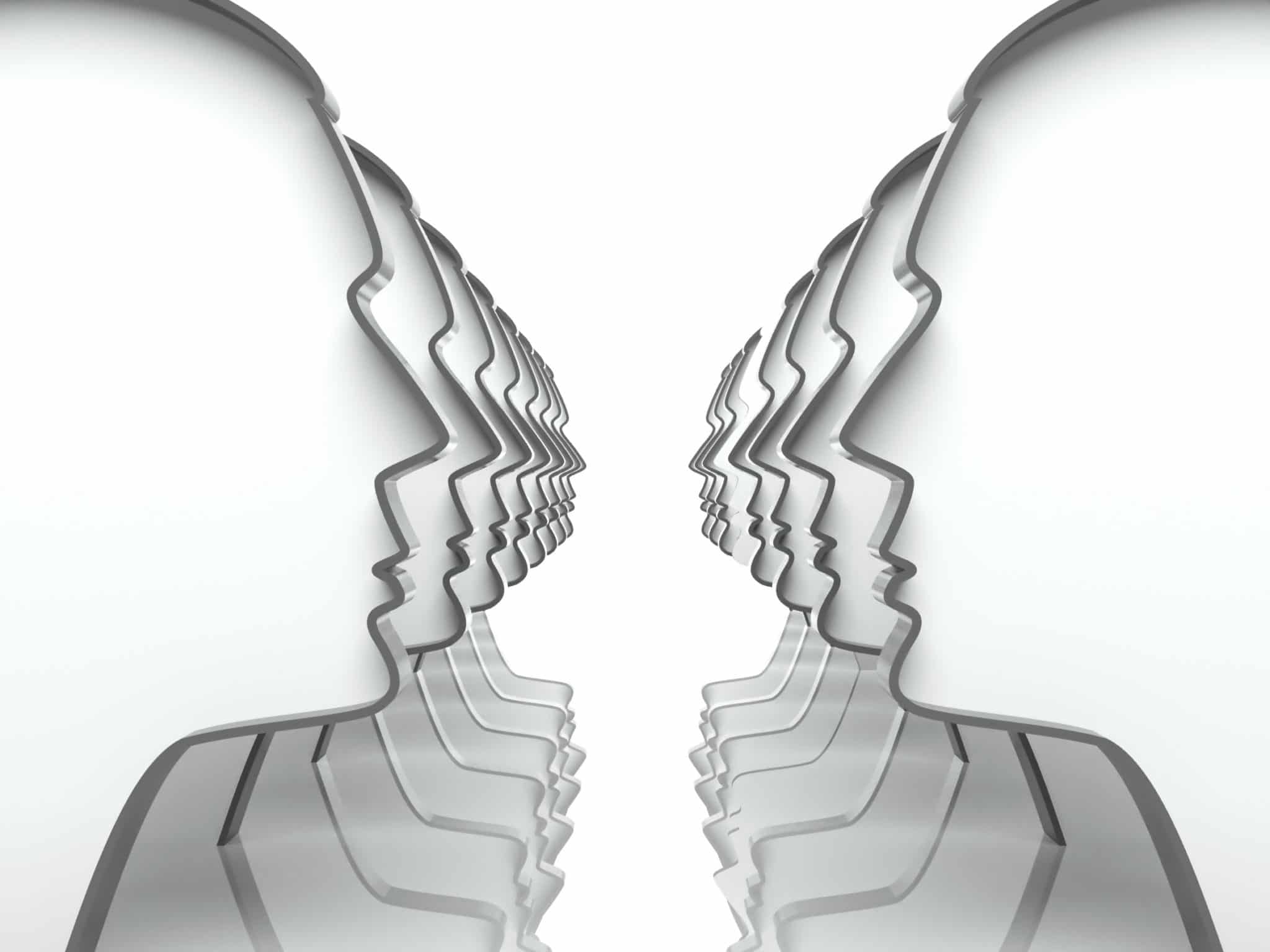The Kabbalah of Marriage
Love remains the most compelling and elusive issues of our time, and perhaps of all time.
How can I find a healthy, meaningful and above all, permanent relationship?
No adequate answer will be found to this question until we first understand what exactly a relationship is.
The word “relationship” means two things relating to one another. But what is the essence of a relationship? What makes a relationship work? What ingredients are necessary?
The secret of a relationship can be found in an unlikely place: The month in which we find ourselves now.
We have just entered the Hebrew month of Elul, the last month of the year. Every month has its own unique energy and power. Elul is the month of love and relationships. The sign of Elul is Virgo, and one of the acronyms of Elul is: Ani l’dodi v’dodi li, meaning “I am to my beloved, and my beloved is to me” (Song of Songs 6:3).
Ani L’dodi V’dodi Li captures the very essence of a relationship: It is mutually symbiotic fusion of two forces – I am to my beloved and my beloved is to me.
First there are two distinct personalities: “I” and “my beloved.” Then the “I” (my personality) takes the initiative and reaches to “my beloved.” In turn, “my beloved” responds “to me.”
Ani l’dodi v’dodi li emphasizes another vital aspect – that a relationship is a reflection: You and your beloved mirror each other. Like the face reflected in water, one heart [is reflected] in another (Proverbs 27:19). Love elicited is in direct proportion to love given. When “I am to my beloved” – “my beloved” will be “to me.” The same way that “I am to my beloved,” so will “my beloved” be “to me.”
Thinking of love as your reflection is quite extraordinary: Look into the eyes of your beloved and you will see yourself.
Finally, Elul’s Ani l’dodi v’dodi li teaches us that love is about initiating. First Ani L’dodi – I am to my beloved, and that is the catalyst for “my beloved to me.” Love is proactive, nor reactive or passive. If you want love in your life do not stand on the sidelines, “protecting” yourself from being hurt and wait for someone to love you. You must learn to give – to initiate, to love. And when you do – love comes back to you.
One powerful question, however, looms: How is it possible that two distinct entities should become one? Can they actually retain their distinct personalities and truly love each other? It’s one thing to say that for love we pay a price. The price is relinquishing independence and compromising your identity for the benefits that love brings. But it’s quite another to claim that love can be had without compromising individuality.
Yet, we are told that true love is unity, and true unity is the fusion of two souls in one seamless union, in which both remain intact while joining as one.
How that paradox is possible requires a journey into the mystery of Divine Unity (Hashem Echod), the theme of this column over the last few weeks.
The quest to discover Divine unity in a pluralistic universe is far thornier than the effort to build unity between finite creatures. After all, as different as two people may be, they still are both human, both mortal and finite, both with more similarities than differences, and both in need of love. G-d and the universe, on the other hand, are infinitely distant entities, that seemingly have nothing in common. Quite the contrary: they are diametric opposites: G-d is infinite, the universe is finite; G-d the invulnerable Creator, we the fragile creatures. Above all, our existential, dependent, existence is absolutely different than the Divine non-existential, independent, existence (metzius bilti metzius nimtza). How then is it possible to unite these opposite realities?
The entire study of Kabbalah and Chassidus – Jewish mysticism – comes to answer this very question; to teach us how humans can develop a relationship with G-d
The mystics lay out an elaborate system which allows us the ability to achieve Divine Unity (Hashem Echod) in the universe: Like “stepping stones” the process of creation, called the “cosmic order,” enables us to climb the ladder that marries heaven and earth, the human and the Divine – the finite and the infinite.
In an article titled The Kabbalah of Duality we discussed the first step in this process – the Tzimtzum concealment. In order for there to be a relationship we first need independence – an “I” who reaches to “my beloved.” In the presence of the Divine omnipresence no independent entity can arise. The Tzimtzum concealment allowed “room” for our independent consciousness to emerge.
However, the Tzimtzum is not “literal,” it is only a state of concealment, and it only affects the outermost layers of consciousness (light), not the higher states, and surely not on the unconscious level. [Yet, even the non-literal Tzitmzum is real, not an illusion, and the independent reality it creates is real, not just in our perception]. Hence, despite the concealment we always have the ability to connect and integrate our lives with the Divine light and the Divine Essence.
But the Tzimtzum only explains the possibility for potential integration, not how to actually achieve it. The non-literal Tzimtzum tells us that within existence we can find the Divine. But does existence itself have Divine properties?
To answer this question we need to dissect existence a bit. What exactly is existence?
Existence as we know it is comprised of various elements, but in its most basic form they break down into two forces: matter and energy. Every part of the universe, from the largest to the smallest, has a “body,” some form (physical or otherwise), and a “soul,” the inner power that defines the energy of the object. Matter is the “outer” layer and energy is its “inner” function and purpose.
Breaking it down further, both matter and energy are also each comprised of these two dimensions: The “body” of matter – its tangible properties, and the “energy” of matter – its shape, form and function: The “body” of energy – its definable personality, and the soul “energy” of energy – its deeper purpose.
Now the question is this: When we connect our lives to the Divine do we do so only on the spiritual (energy) level or also on the material (matter) level?
The argument could be made, as some schools of thought maintain, that the objective of life is to deny the material and transcend to the spiritual. Unity, then, is achieved exclusively on the soul level.
Even if we need to engage somewhat the material world, some suggest that at most we can channel the “function” of matter toward spiritual ends, but not the coarse matter itself.
At the other extreme, one could argue that even the spirit and energy of existence cannot be integrated with the Divine. At most the “energy” of energy can find some commonality with G-dliness, but not the “matter” of energy (its personality and form). A soul can unite with G-d only in a very general sense, but not with its distinct personality. Its must relinquish its individuality in order to become one with the Divine.
[All these viewpoints, mind you, are possible even according to the non-literal interpretation of the Tzimtzum, which only tells us that the Divine is present (albeit concealed) within existence, but does not inform us about the personality of existence, and thus, to what extent we can integrate the universe with the Divine. Let alone according to the literal interpretation of the Tzimtzum, according to which there is no direct relationship between our world and the reality of the Divine].
In the ultimate application of Divine unity, the mystics teach us – as emphasized in the works of the Chassidic masters – that the unity must permeate every fiber of existence, not just its spirit, not just its shape, form and function, not just in general terms. But every dimension of the universe – from energy to matter, from the matter of energy to the matter of matter – contains a Divine dimension that is waiting to be released.
They explain this with the elegant structure of the “cosmic order” comprised of “energies” (lights) and “containers,” which correspond with and are the root of the “energy” and “matter” of our universe.
By understanding the interplay between “light” and “container” and how each of them interact with their respective divine source, we can learn how to marry heaven and earth and integrate every aspect of our beings with higher purpose, ultimately with the Divine itself. The relationship between these forces teach us how to develop the relationship between our material bodies and souls, between our involvements in the physical worlds with our spiritual endeavors; we learn how to develop and expand our own material “containers” and fuse them with the “lights” of spirituality.
Beginning with the human soul shaped in the Divine Image, the mystics explain that the soul manifests and mirrors the Divine energy (light); each person’s soul is a reflection, a microcosm of G-d’s “personality.” And not just in a general sense, but the distinct personality of each soul is rooted in the distinct personality of the “lights,” which have defined properties (there are actually several opinions regarding the extent of these “light” properties, which reflect in different levels of the unity that can be achieved. But the final consensus is that the “lights” have individual properties, which allow our unique personalities to find divine expression).
Similarly, the spiritual forces within the material world can be aligned to their respective Divine roots, in all their glorious detail, rooted in the Divine light, the kav (thin ray of light) that pierced through the Tzimtzum, whose source is the light before the Tzimtzum, the Divine power to create the infinite (koach ha’bli-gvul).
That’s the soul. What about the body and the matter of the universe? The human body too was created in the Divine Image, and every aspect of matter is shaped by the “hand of G-d.” Not only “light” but also the “containers” reflect higher levels of the Divine. Not only the spirit but also the structure of existence is rooted in the Source with G-dlike features, which we have to reveal.
In mystical terms: The “containers” of existence are rooted in the Divine “containers” of Atzilut, which in turn are a reflection of the “containers” of Adam Kadmon, which originate from the (letters of the) reshimu, the residue that remained after but was unaffected by the Tzimtzum, rooted in the Divine power to create the finite (koach ha’gvul).
Now, when you take into account that “light” and “container” join together until they become one, we can begin to understand E=mc2 – how energy and matter are actually one and the same.
This, briefly, is the way the Kabbalists explain how the very fabric of existence (matter and energy) can be integrated with the Divine. It’s not just that the Divine Essence, which transcends all definitions and structures, enables the fusion of matter and spirit. That would imply that the fusion is solely a result of the Essence’s power, despite the limits of existence. The ultimate purpose is that the universe, on its own terms and by the standards of its own parameters, contains the Divine. That is ultimate unity – not simply on G-d’s terms, but also on the terms of existence. Such unity can only be achieved when we recognize that in the personality of existence glimmers of the Divine.
Discovering the Divine within the properties of our universe is the most magnificent effort we can undertake, transforming life into a majestic journey.
The ultimate manifestation of Divine unity is in human relationships – in the ways of love and marriage. The “lights” and “containers” that teach us how we can fuse our lives with the Divine, teach us how we can discover true unity, while maintaining our individuality in our interpersonal relationships.
A good analogy for this is music: The power and beauty of a melody is dependent on each note maintaining its “individuality” and playing its unique sound. Simultaneously, each note is completely fused with all the others, all complementing each other, without in any way compromising each ones’ distinct identity. The same synthesis – harmony out of diversity – can be witnessed in the symmetry of every healthy organism and system, from the human body to the extraordinary design of nature.
A true relationship is total fusion of two – “I am to my beloved and my beloved to me.” Two distinct individuals, with different bodies and different souls, join together, in one seamless union. Neither is compromised or diminished. A transcendent power enables the fusion; but it also manifests in the individual personalities: as they remain intact they also recognize on their own individual terms that love – “I am to my beloved and my beloved to me” – is the ultimate expression of individuality.
In this month of Elul we have the opportunity to create, mend and renew relationships. May we use the month well, and may we all be blessed with experiencing “I am to my beloved and my beloved to me.”
One fundamental question still remains: How can we achieve total fusion of “I am to my beloved and my beloved is to me” when the Divine Essence is a non-existential reality, completely different and beyond our existential existence? Given, we can unite with the Divine as it manifests in existence, but can we actually connect to the ultimate reality – the innermost essence of Divine reality, which we have absolutely no way of relating to?
The answer is in: I Am to My Beloved and My Beloved Is to Me.









I agree with this to a point. Sometimes in a relationship, we give more than we get and the amount we get back may NOT be proportional to the amount we give. At least in our relationship with G-d, we believe that we will get what we need and what we deserve, if not in the present, in the afterlife. But when you are in a relationship with a human, sometimes it doesnt work quite the way you would like it to.
What do you do if you feel like your relationship with another person is very one-sided, as Judy stated above? You constantly give more than what you get… How can you attempt to balance out this relationship?
We often give more than we get in a relationship, but not to give so much we have nothing left to give.
I loved the article, it relates to our feelings at this time.
I laughed with my son after listening to the insight as I and my son are both 7 days apart in September. My Greatest Gratitude 🙏 so Blessed & Gifted with we came across your studies 2 day.